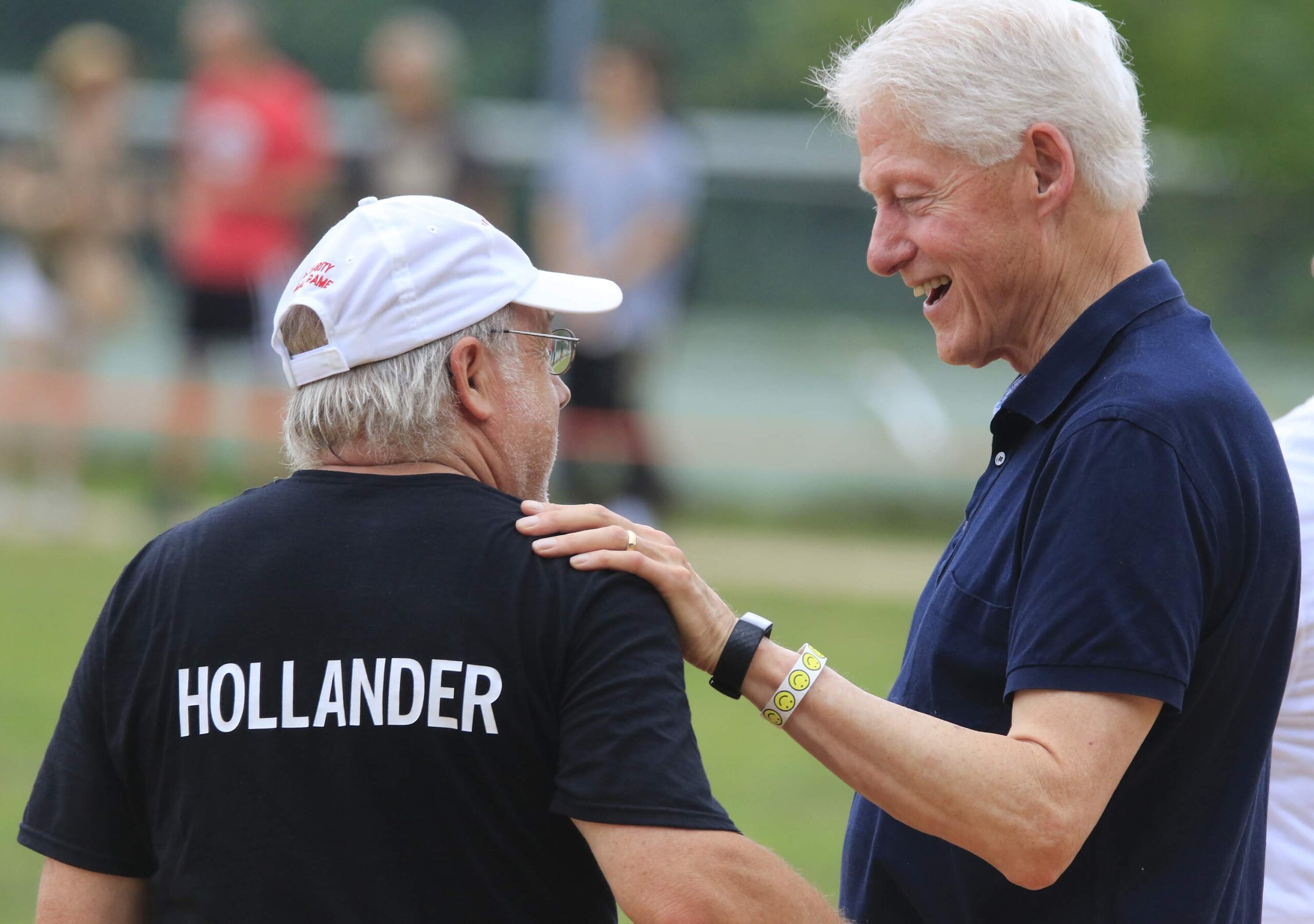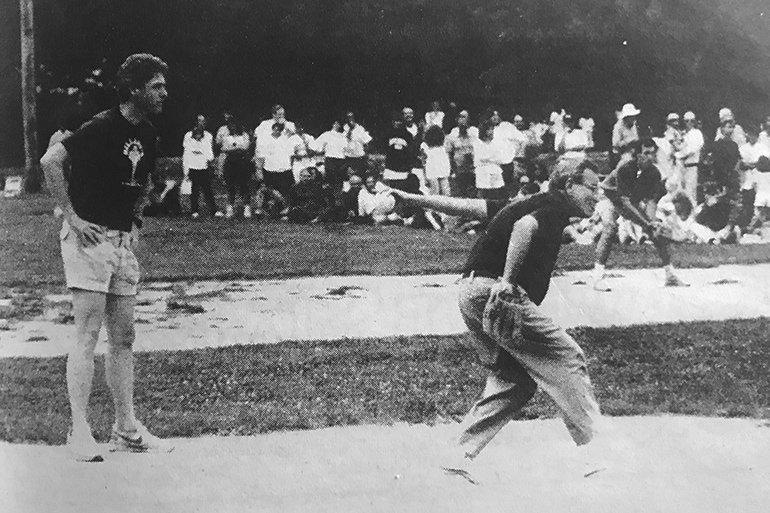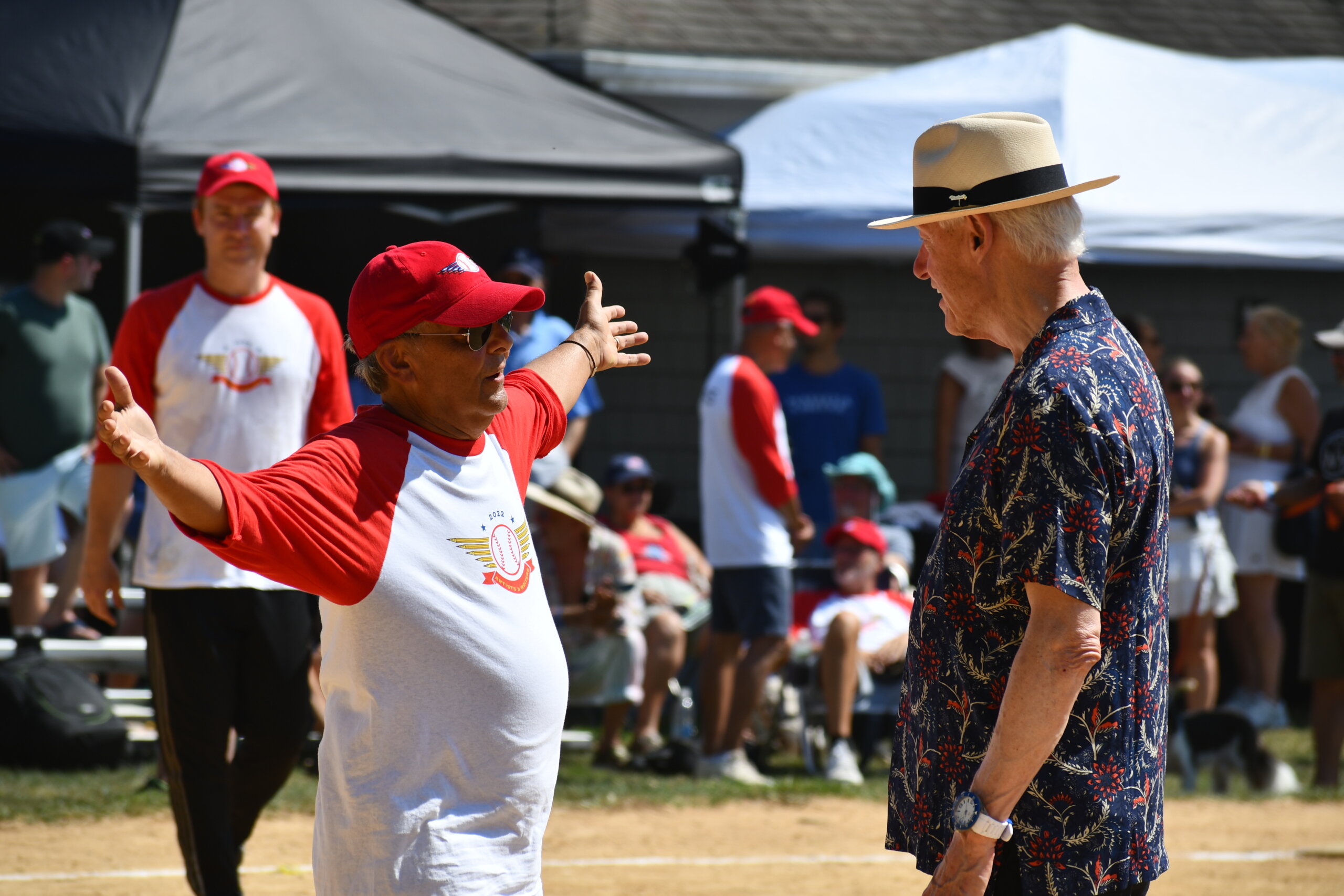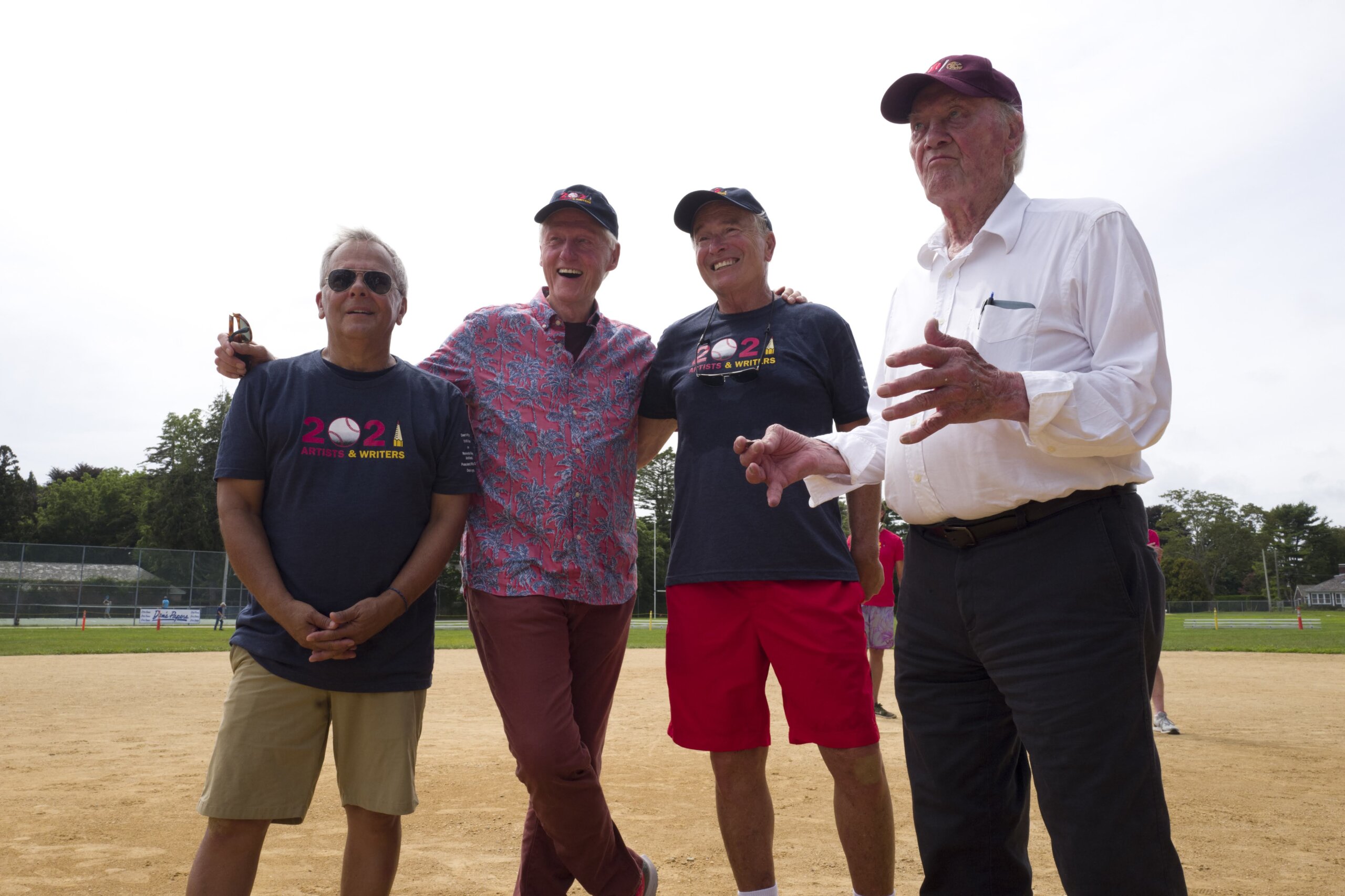The Artists, the Writers & the President: Bill Clinton at the Artists & Writers Game

Hundreds of creative luminaries have played in the annual Artists & Writers charity softball game, now in its 75th year. So how did Bill Clinton become its best-known mainstay?
The Artists & Writers softball game turns 75 this year, and though its 94-year-old chairman Leif Hope hasn’t been on the field for every contest, he recalls details of each summer’s tilt as well as anyone. Except, perhaps, for a certain former U.S. President: Bill Clinton.
“I saw him three or four years ago when he came out for the game,” says Hope. “I said, ‘How nice to see you, Mr. President … you were first here in 1989.’ And he corrected me. He waved his finger at me and he said, ‘ ‘88! ’ ”

The 42nd President indeed rolled into East Hampton to take part in the Artists & Writers game for the first time 35 years ago. He’s become a mainstay at the annual event, showing up 10-15 times since, according to the game’s organizers. Clinton usually umpires for a few innings, then departs as mysteriously as he arrived.
So, for a game whose participants have ranged from Jackson Pollock to George Plimpton to Lauren Bacall to Yogi Berra, how did a former President end up as the best-known regular? The answer lies in the event’s often-foggy past.
According to Hope, there was no first game—or at least, none of the early organizers officially declared one at the time. But the tradition started at some point in 1948, eventually becoming an annual picnic held on painter Wilfrid Zogbaum’s lawn. Though the game eventually turned into a fundraiser for local charities, rumor has it the first cause was to bail an Artists team member out of jail for public intoxication.
Before Clinton, the best-known politician to appear at the game was Eugene McCarthy, who in 1968 told Hope he’d rather be remembered as a great first baseman than as a senator. He went on to participate in several more games for the Writers (though according to the archives, he played second base in 1969).

Perhaps inspired by McCarthy’s example, Clinton arrived in the Hamptons for the first time in 1988. His late friend Liz Robbins, a powerful lobbyist and fundraiser for progressive causes, brought him to a weekly Saturday morning game in Sag Harbor that summer.
“I’d written about him as governor, and I’d written a book about poverty, which he would talk about,” says Writers team captain Ken Auletta, who met Clinton that day in Sag Harbor and invited him to that year’s Artists & Writers exhibition. “I said, ‘Why don’t you come? Would you come and umpire the game for a couple innings?’ That became a tradition.”
Though Clinton’s appearances indeed became a perennial highlight, even the game’s sharpest vets don’t remember much from his debut. Artists team captain Ronnette Riley recalls that Clinton played somewhere in the infield. But could he hit?
“I don’t remember,” says Riley with a chuckle. “I just thought, ‘What’s a governor from Arkansas doing in the Hamptons and playing in this game?’”
The 1988 contest itself was an eventful one, according to public archives. Local union members showed up to wave “Justice for Janitors” signs at Mort Zuckerman. Bianca Jagger paid $8200 for a piece of art at the game’s charity auction. And with Clinton serving as home plate umpire, Mike Lupica blasted a two-run triple over Paul Simon’s head. That was all the Writers would need in a 15-1 trouncing of the Artists.
Clinton was hooked on the game, and—even after his widely-pilloried speech at the 1988 Democratic National Convention—the Artists & Writers community was hooked on him. Judith Hope, the former New York State Democratic Committee chair (and Leif Hope’s ex-wife), often found ways to invite Clinton. And whenever Auletta heard Bill and Hillary were renting out East, he’d alert Robbins, who’d relay the message.

After Clinton was elected, his visits became decidedly trickier. He began to travel with a full secret service detail, and security concerns necessitated making his appearances a surprise, even to the game’s organizers. The media frenzy around the controversies of his second term only compounded the logistics.
Ultimately, according to Riley, Clinton figured it was worth the trouble—and not necessarily for the reasons one might think.
“He came, he played, there was nothing in it for him, really,” she says. “Other than good fun.”
Of course, politicians rarely do anything just for good fun. And the Hamptons indeed proved to be fertile ground for big ticket Democratic donations over the years, both for Bill and Hillary. But the former President’s first appearance at the game came before he was a national figure, and his latest followed long after the end of his campaigning days.
So maybe Riley is onto something. In that spirit of good fun, should we expect a return to the field for Clinton—perhaps as more than an umpire?
“Bill Clinton would qualify as a writer,” says Auletta, noting the former president authored a voluminous autobiography. “One of my missions is to make sure he gets the invitation.”



